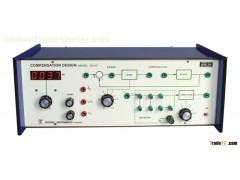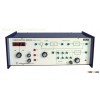We offer Compensation Design useful for control labs. Practical feedback control systems are often required to satisfy design specifications in the transient as well as steady state regions. Cascade compensation is most commonly used for this purpose. This unit has been designed to enable the students to go through the complete design procedure and finally verify the performance improvements provided by compensation. The experimental set-up is accompanied by the supporting literature which becomes of vital importance as a major part of the experiment involves theoretical design of compensation networks.
Highlights
- Design and test cascade compensator
- Simulated system for accurate results
- Built-in compensator – only passive external components
- Built-in signal sources
Experiments
- Lag/Lead compensation in the frequency domain
- Lag/Lead compensation in the s-plane
- All the above design problems may be undertaken for a very wide range of design specifications
- The implementation of the compensation network has been made very convenient by a pre wired amplifier with calibrated gain
Features and Specifications
- Simulated ‘uncompensated’ system having adjustable damping. Peak percent overshoot MP, variable from 20% to 50%, and steady state error variables from 50% to 0.5%
- Compensation network implementation through built-in variable gain amplifier. Gain is adjustable from 1 to 11
- Built-in square and sine wave generators for transient and frequency response studies. Frequency adjustable from 25Hz – 800Hz (approx.)
- Essential accessory: a CRO
The experiment is complete in all respect, except a CRO.
Compensation Design







